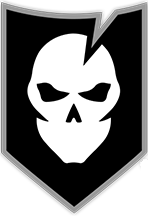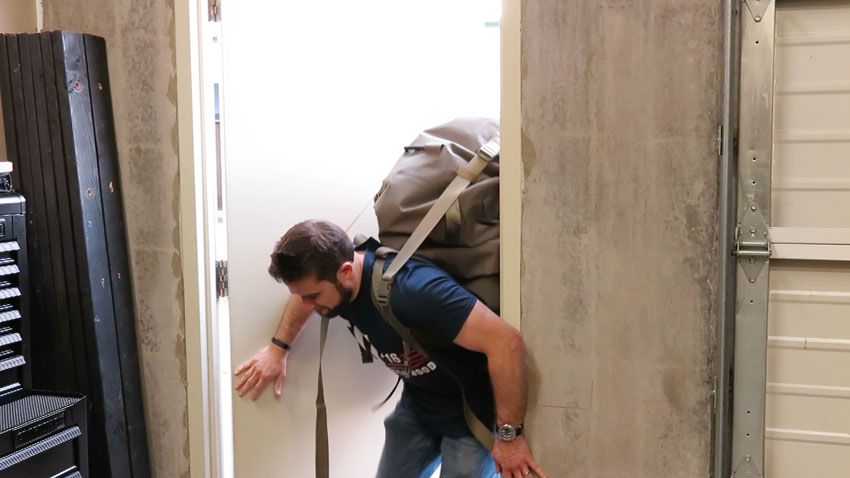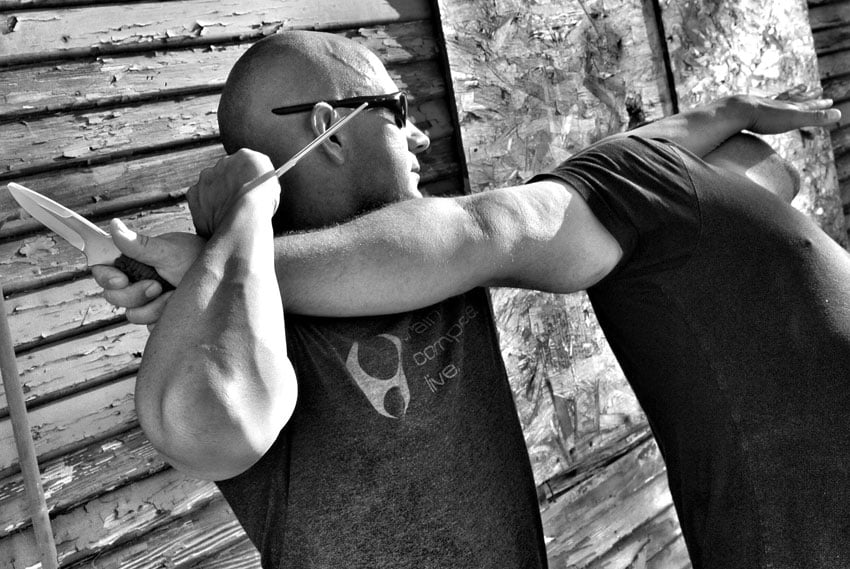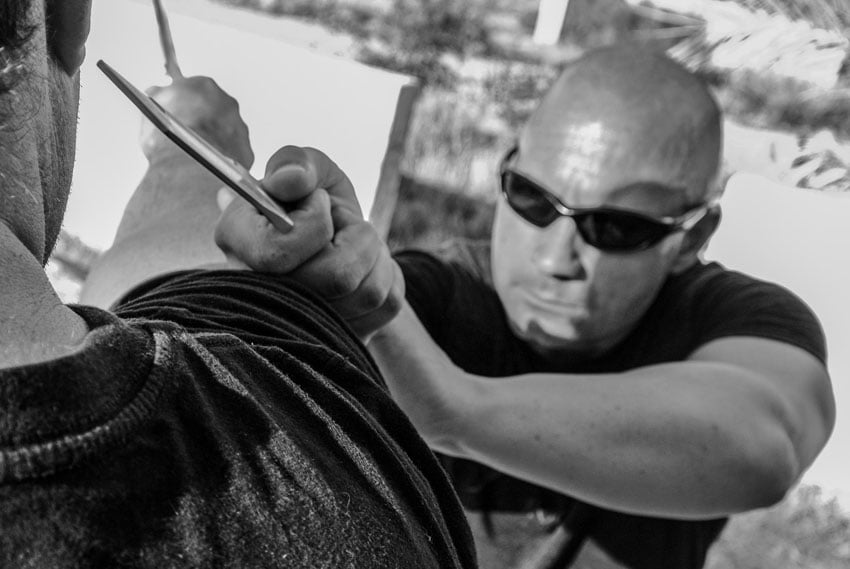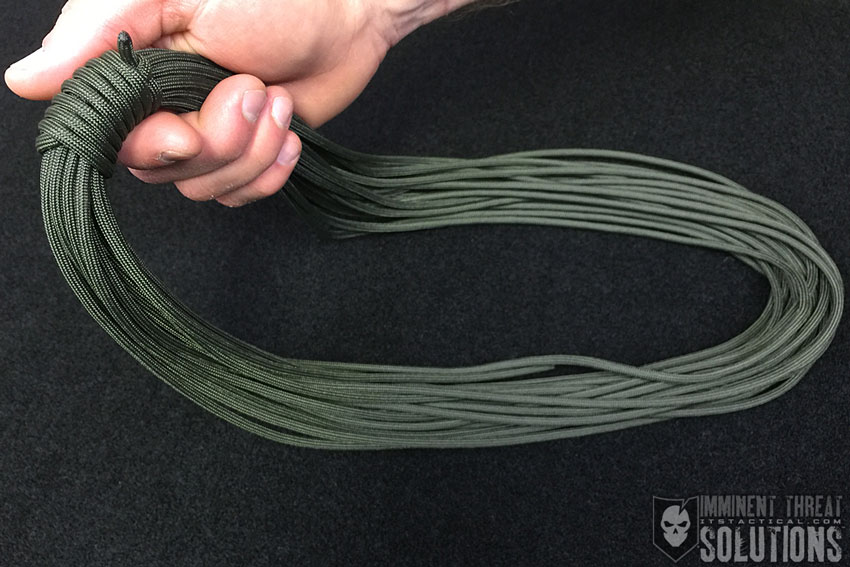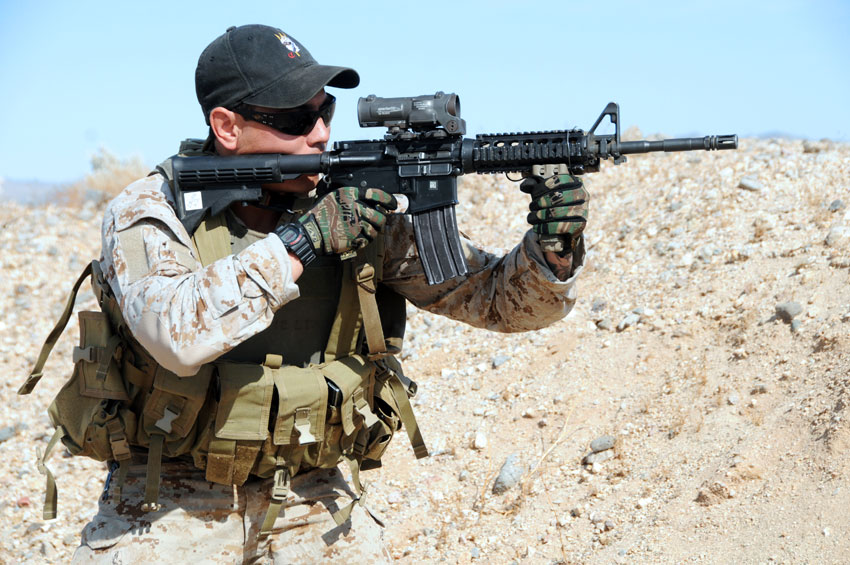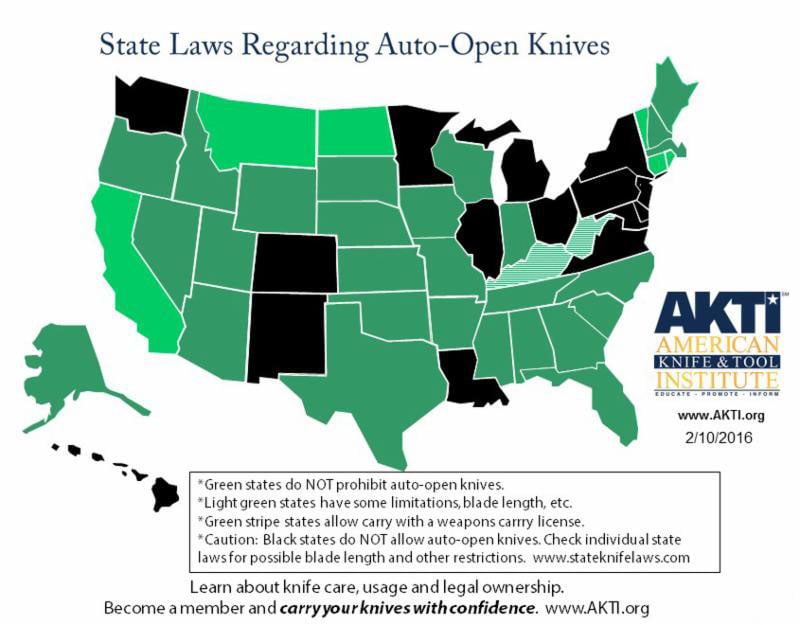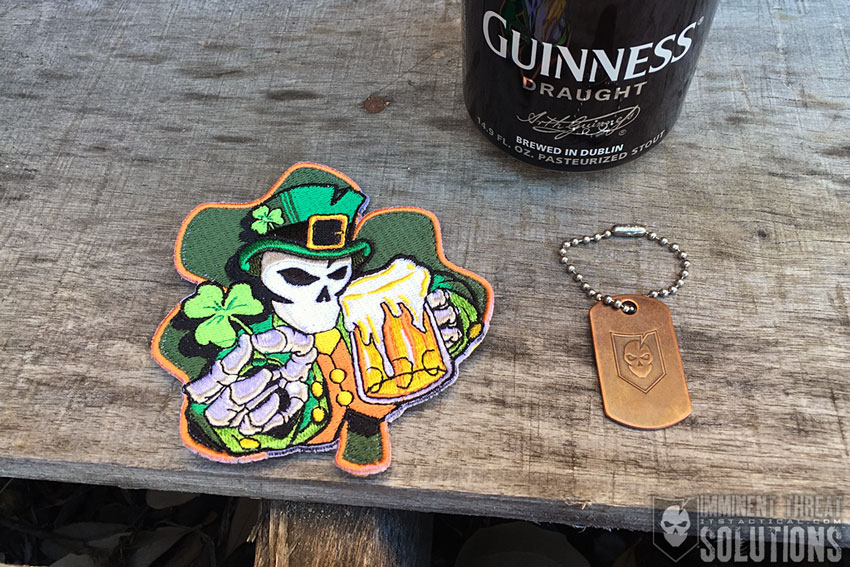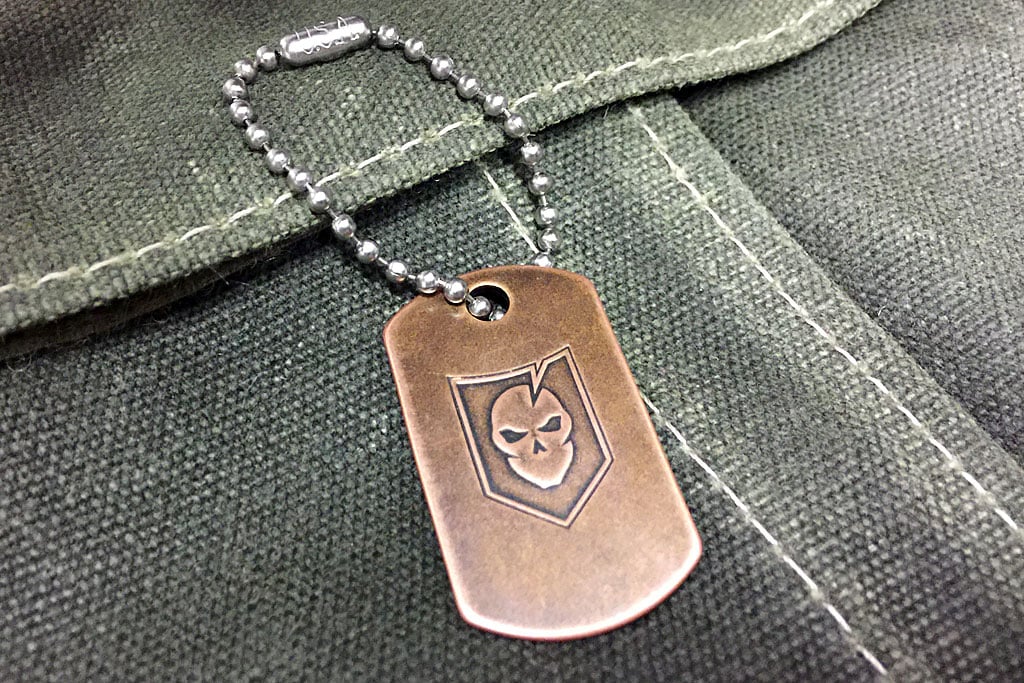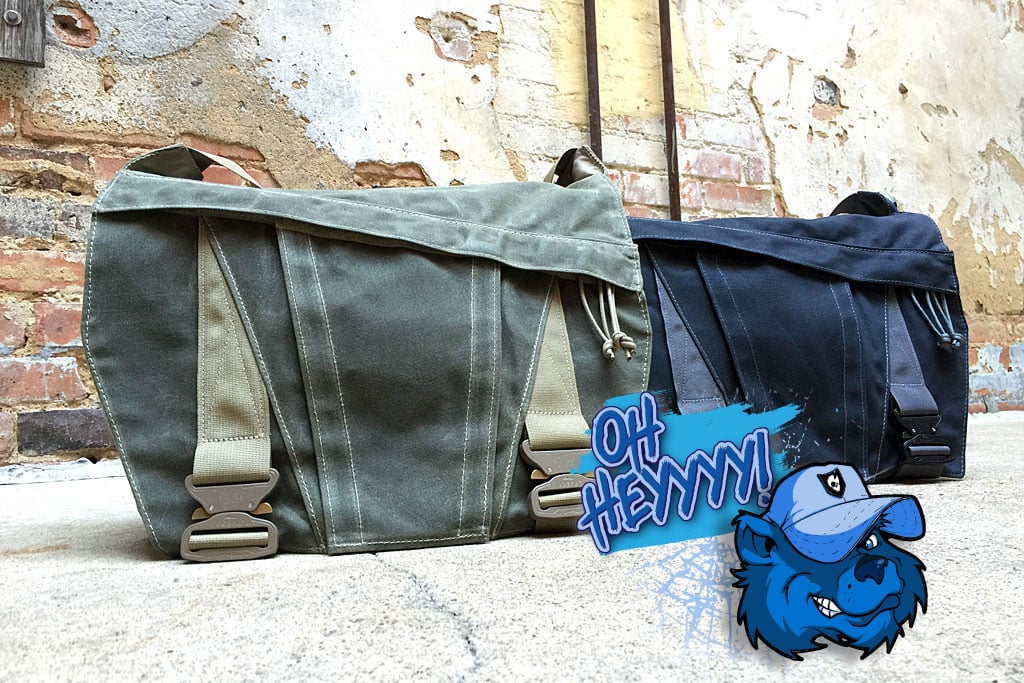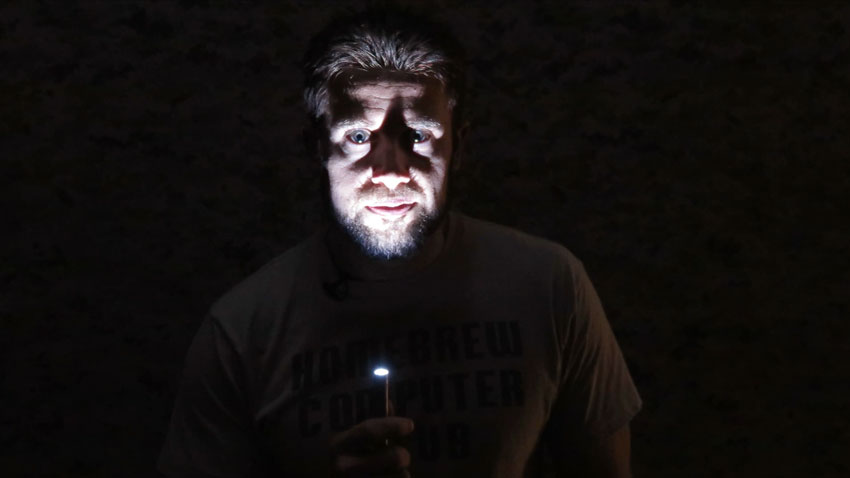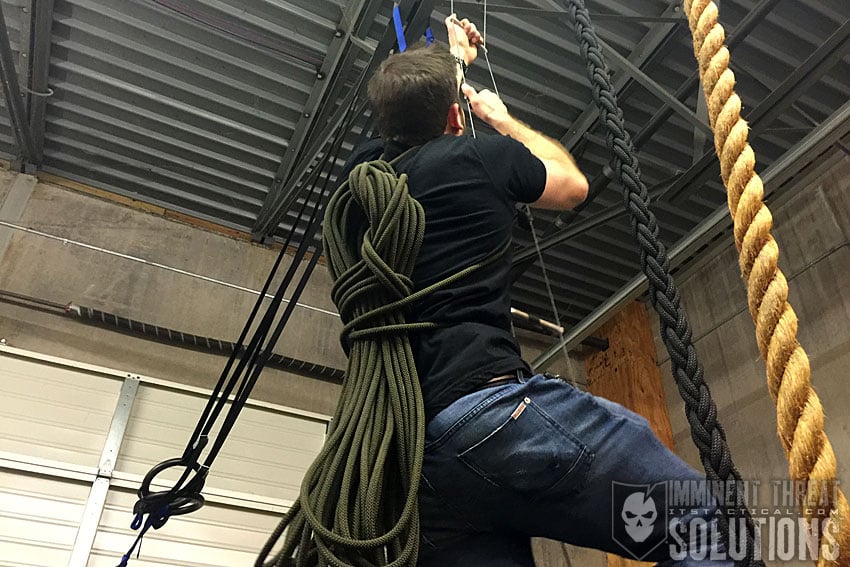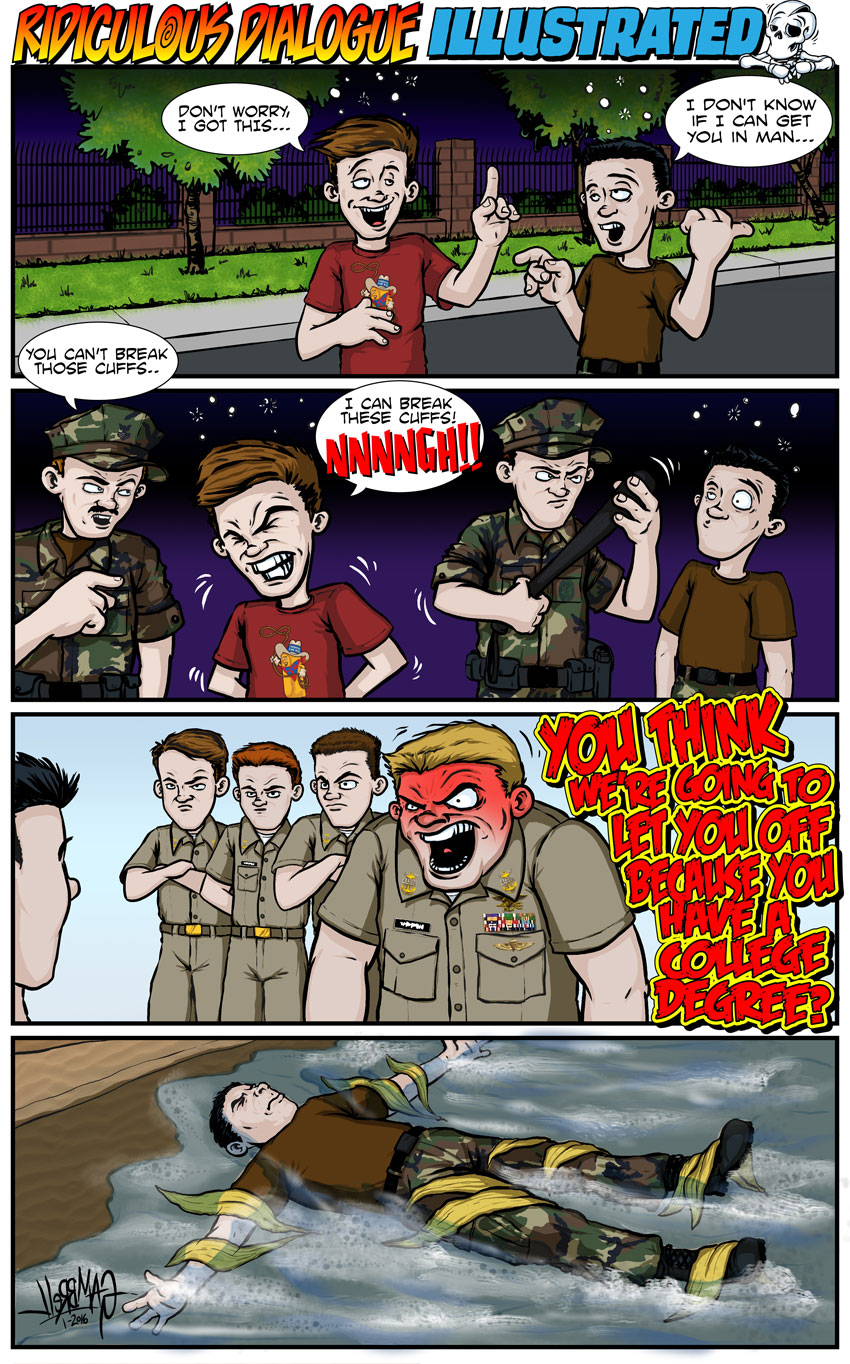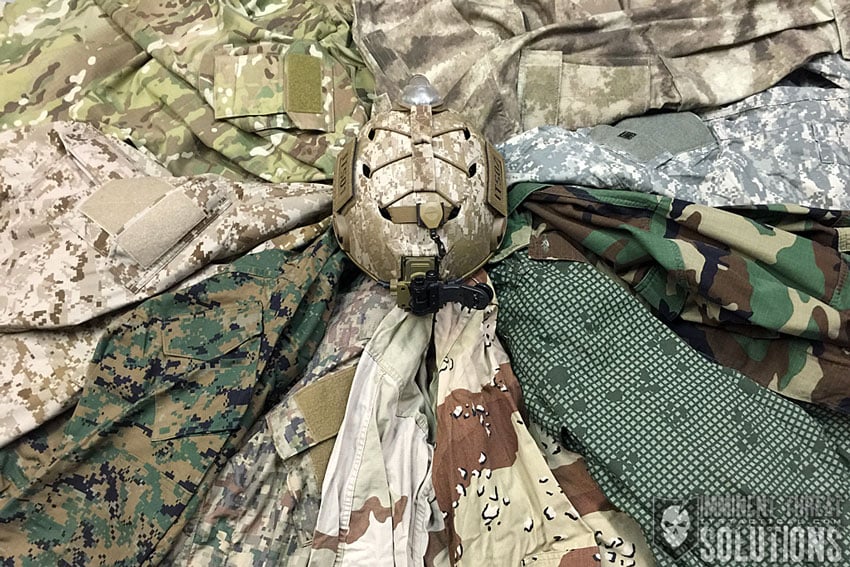
Camouflage is the technique used to conceal the presence of a person, piece of equipment, or installation by making it blend into its surroundings. Since the 1850’s, militaries around the world have embraced the concept of camouflage in order to help obscure the visibility and movement of their troops by enemy forces. Prior to this time, militaries generally wore uniforms that were comprised of bold, easily recognizable colors.
It was the British who first abandoned their own bright red coats in favor of khaki uniforms in India, which blended more easily into the landscape in which they operated. Since that time, methods of camouflage have become more advanced and deemed crucial in battlefield situations. While these methods are diverse, today we’ll be discussing a handful of camouflage patterns currently in use by modern military organizations, mainly among Western nations. More specifically, the majority of these patterns are commercially available to the general public.
The United States of America
The United States Armed Forces currently uses multiple patterns amongst their four branches of service. Some patterns have been used by multiple forces, while others were developed specifically for one branch or another. Part of the reason for the variety of patterns in use is that different environments require different types of camouflage.
If you’re deployed in a desert environment, the colors and patterns needed to blend into that environment are obviously different than those needed to blend into a wooded or jungle environment. In some cases, the reasons for certain services using, or having used certain camouflage patterns are less obvious; having more to do with the leviathan processes of management by committee than with providing functional concealment.
ERDL, M81 and Woodland
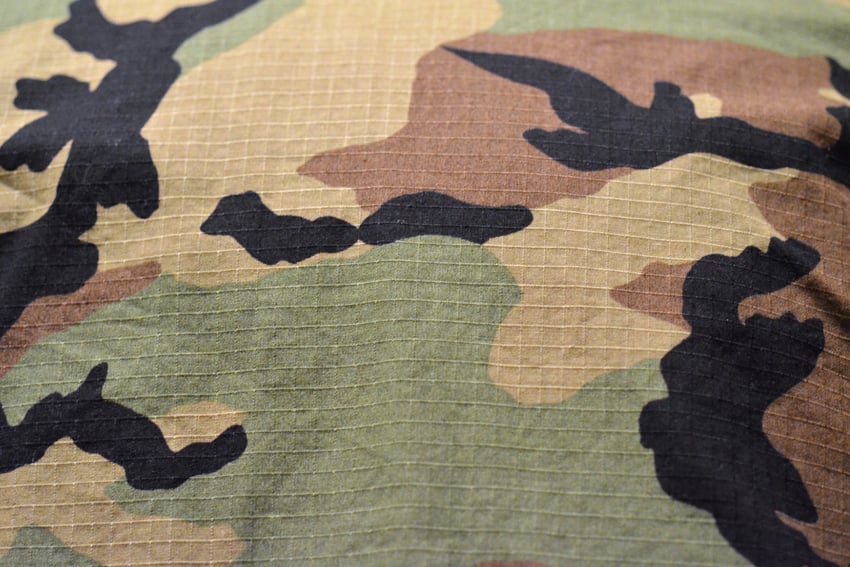
M81 is the name of the pattern frequently referred to as “Woodland Camo”, which has seen service in the Army, Marine Corps, Navy and the Air Force. Woodland is still in use today by certain units, operating in particular environments. M81 has been derived from the ERDL pattern, which was developed by the US Army’s Engineer Research and Development Laboratory (thus the acronym) in 1948, though it didn’t see much use until 1967.
In 1981, the ERDL pattern was enlarged and released as the new standard “M81” pattern. ERDL and M81 have not only seen use by all four US branches of service, but multiple other nations’ armed forces as well. M81 uniforms and gear are still produced by a variety of manufacturers and are widely available at surplus outlets.
Within the commercial market, the ERDL pattern has been used as the template for such “fashion-oriented” camouflage variants as purple, pink, red and blue camouflage materials by replacing the earth-tone color schemes with brighter hues, which are obviously less useful for concealment purposes; unless you’re prone to hiding in piles of Lego or dog toys.
Six Color Chocolate Chip Desert Camouflage
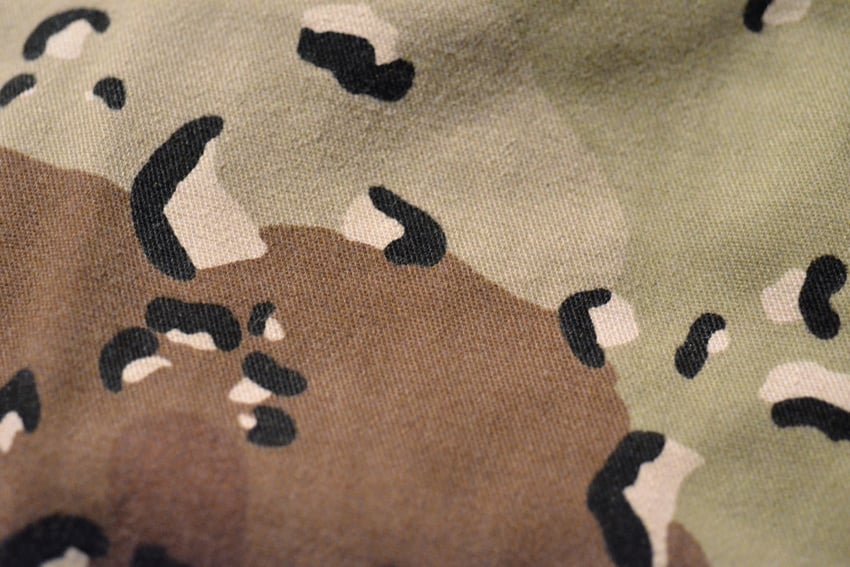
Known alternately as “Six Color Desert Camouflage,” “Chocolate Chip Camo,” or “Cookie Dough Camo,” this pattern was used by the Army and other branches in the 1980s to mid 1990s. It was initially designed in 1962 under concerns that the United States might possibly have to intervene in the various conflicts between Israel and their surrounding Arab neighboring countries. First issued to select US Army units, including the 101st Airborne in 1981, it was issued until 1992.
The Marine Corps used Six Color Desert Camo from 1982 until 1995, while the Air Force issued it from 1982 until 1993. The Navy used the pattern as their desert camouflage option from the early 80s until the mid 90s and the Coast Guard adopted it in 1985. Six Color Desert Camo was eventually replaced with the DCU pattern, (also known as “3 Color Desert Camouflage”) but wasn’t ready in time for the Persian Gulf War, therefor Chocolate Chip Camo was used widely throughout that conflict.
Many militaries are still using the Chocolate Chip pattern to this day; uniform pieces are still being manufactured and are readily available in the commercial market. Other militaries have either used the exact same pattern, or in the cases of China, Egypt, Pakistan, Spain, Saudi Arabia and Eritrea, have closely copied the design for their own armed forces.
Three Color Desert Camouflage
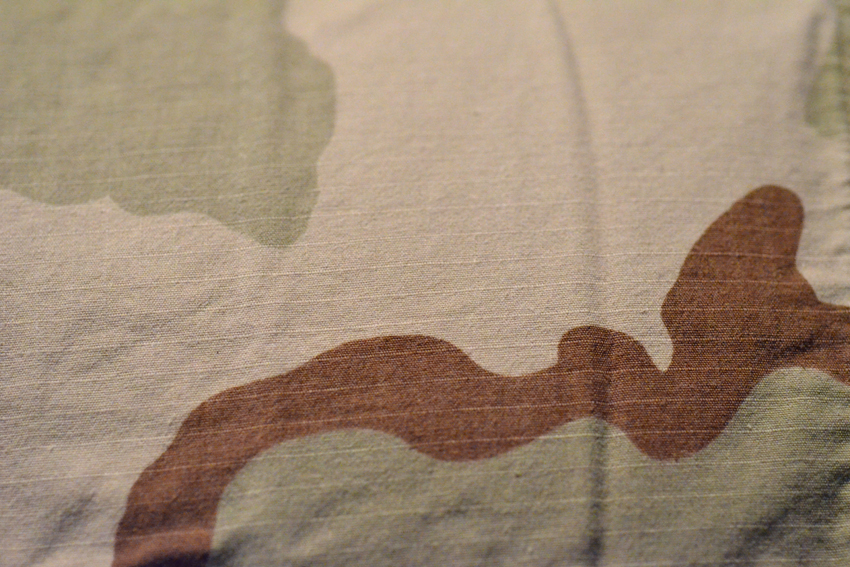
The DCU pattern, comprised of three colors, was developed to address the needs of desert conflicts that had less rocky and more open battlefields. It was first issued as an experimental test pattern in 1989. Soil samples from Saudi Arabia and Kuwait were used to determine the colors in the DCU pattern, which was also known by the nickname “coffee stain camo,” due to its appearance.
It was introduced across the board to all four branches of the US military, as well as the Coast Guard, around 1992. It was the primary issued camouflage pattern until 2004 for the Army, 2002 for the Marine Corps, 2010 for the Navy and 2011 for the Air Force. The Coast Guard still issues the DCU pattern to troops stationed in desert environments as of the writing of this article.
Woodland MARPAT and Desert MARPAT

Design and testing of the two patterns currently in use by the Marine Corps began in 2001 and was heavily influenced by “fractal design,” (as was used in the development of Canada’s “CADPAT” pattern) as well as prior patterns like Rhodesia’s “Brushstroke” pattern and the “Tiger Stripe” pattern from the Vietnam era. The Marine Corps design team that developed MARPAT went through over 150 patterns before narrowing it down to three candidates, which were then tested at the USMC’s Scout Sniper program.
These tests involved spotters searching for the pattern in a variety of different natural fields, with the time it took to find the pattern recorded. The longer the spotting time, the more effective the camouflage was rated to be. In the end, the MARPAT pattern was the most effective and as a result, it was issued to Marines starting in 2002.
Though three variants of MARPAT were initially tested (desert, woodland and urban), only two were issued. As an interesting trivia note, one color present in both Desert MARPAT and Woodland MARPAT, “Coyote Brown,” was based on a Ralph Lauren Home paint color named Coyote.
That color has since been discontinued from the RL paint line, though the color formula for reproducing it still exists. That information, as well as a great number of other details about the design process involved in the development of MARPAT, is available from an email written by Ken Henley, one of MARPAT’s designers, in Military Morons’ article about various forms of camouflage.
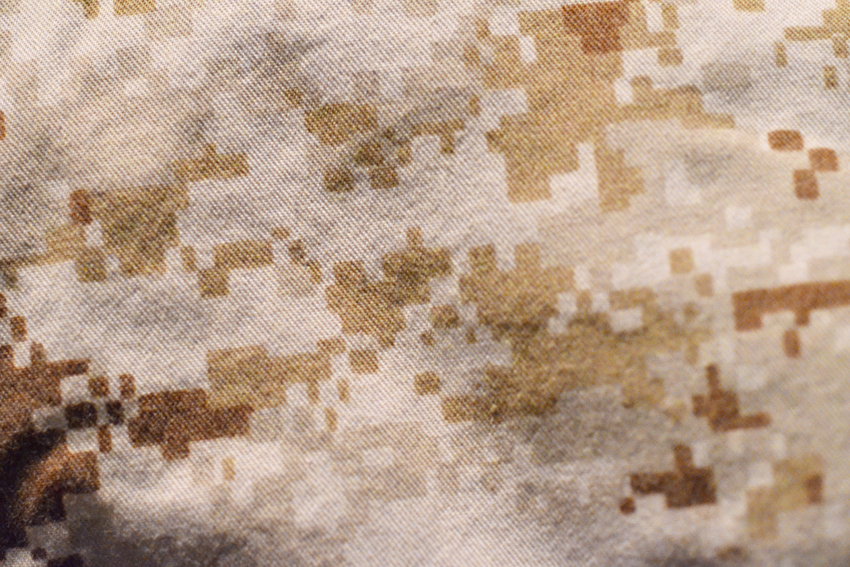
Though Woodland and Desert MARPAT bear some passing resemblance to Naval Working Uniform patterns, “AOR I” and “AOR II” are in fact, significantly different (more on these further down in the article.) Bryan wrote about this very subject in this excellent piece on ITS from 2012. The two MARPAT variants in use by the USMC have also been used by other militaries around the world since their adoption, including our neighbor to the south, Mexico.
Generally speaking though, the versions of MARPAT used elsewhere are not “genuine” MARPAT, but rather close copies of the pattern, which is patented and contains a small Eagle, Globe and Anchor symbols embedded periodically within the pattern. “Official” MARPAT is not generally available to the general public, aside from surplus sales of used clothing and equipment, though non-official copies of MARPAT (often simple referred to as “Desert Digital” and “Desert Woodland” exist and are plentiful.)
Universal Camouflage Pattern (UCP)
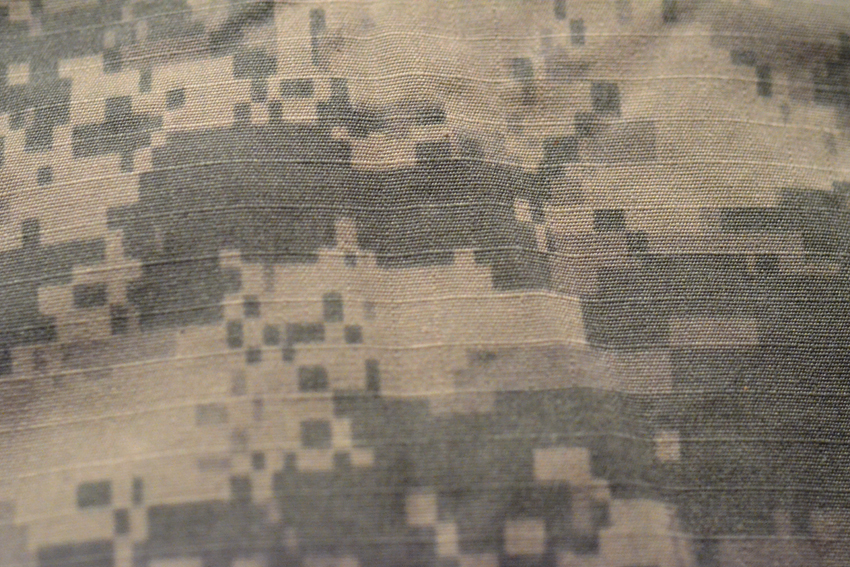
Much has been written about the Universal Camouflage Pattern, (many times mistakenly referred to as “ACU,” which is actually the functional uniform design implemented at the same time as UCP) which was the US Army’s replacement pattern for M81 Woodland and first issued in 2004. UCP was initially developed to be an adaptable camouflage pattern which would be suitable for multiple environments, though the controversy surrounding the uniform began as early as the testing phase, where it scored the lowest of all the patterns tested by the Army.
True to the nature of large government bureaucracies, it was then selected as the chosen pattern. Once issued, it was found to be left wanting in both the Iraq and Afghanistan campaigns that were well underway at that point. As a result, it was subsequently replaced by Crye’s MultiCam pattern (which had surpassed UCP during the testing phase) in Afghanistan under the name “Operational Camouflage Pattern” (OCP) or “Operation Enduring Freedom Camouflage Pattern” (OEFCP).
When the Army commits to something though, they commit to it fully, which can have serious costs if what they commit to turns out to be the wrong choice. Estimates are that the choice of UCP cost the Army about five billion dollars and in 2014, they announced that beginning in 2015, UCP would be replaced with a new pattern known as “Scorpi on W2”, closely related to Crye’s MultiCam pattern. Scorpion W2 would also be issued to replace OCP.
Crye MultiCam, OCP and Scorpion W2
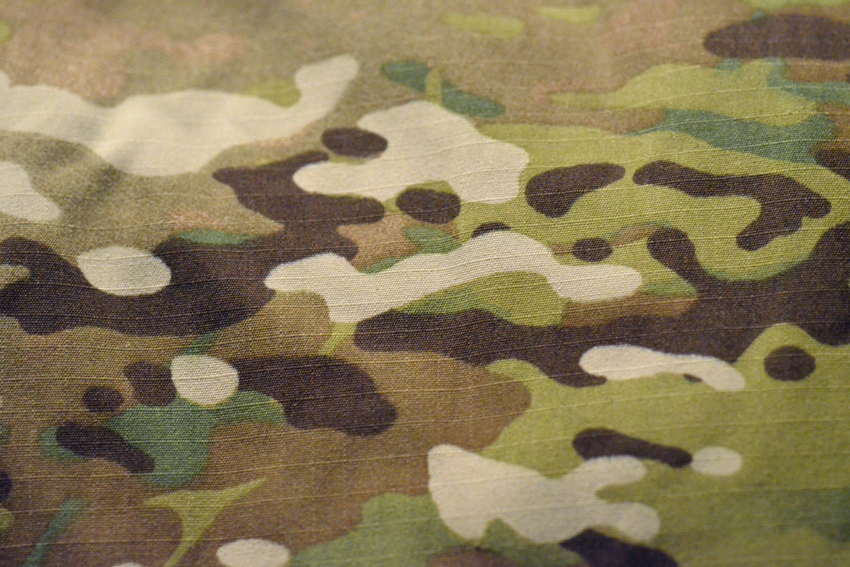
Originally developed under the name “Scorpion” by Crye Precision in 2002 while under contract with the US Army, MultiCam had been the first choice in the US Army camouflage trials. However, when “printing costs” proved to be a deal-breaker for the Army in adoption of the camouflage pattern, they went with the last-place finisher, UCP. Scorpion W2 is the result of modifications made by Natick to the MultiCam pattern. One major difference between Scorpion and Scorpion W2 is that the Army owns the licensing for Scorpion W2, which allows them to have it produced while avoiding the costs that had initially made them wary of going with MultiCam.
The MultiCam pattern consists of shapes in gradients of dark brown, lime green, tan, a darker green and light pink splotches. It has proven quite effective in environments like Afghanistan, which are at times rocky, at times heavy with vegetation and at times sandy. There are a number of official variants of MultiCam, including Scorpion W2, the UK’s “Multi-Terrain Pattern,” Australia’s MultiCam Camouflage Uniform (AMPU) and versions used by Chile, the Republic of Georgia, Poland and Russia.

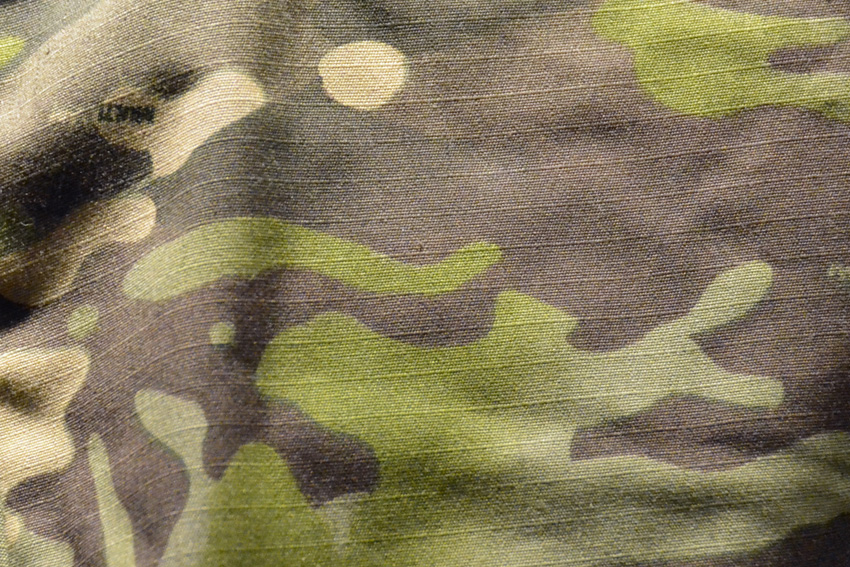
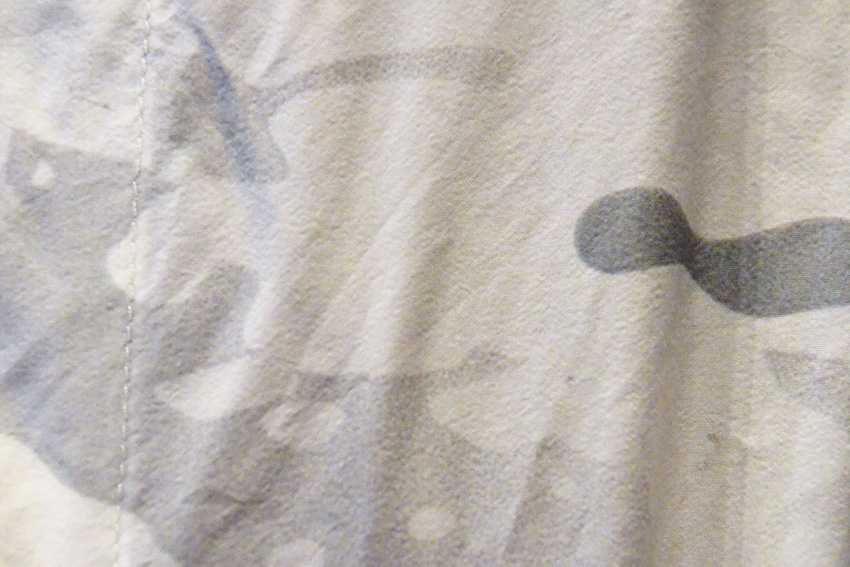
Additionally, Crye Precision has developed variations on the MultiCam pattern for specific environments; MultiCam Arid for sparse vegetation desert environments, MultiCam Tropic for heavy vegetation jungle environments, MultiCam Alpine for snowy mountainous environments and MultiCam Black, largely geared towards Law Enforcement special weapons and tactics teams. As time goes by, more of these specific environment patterns have become commercially available, as “regular MultiCam” has been since its inception.
Airman Battle Uniform Digital Tiger Stripe
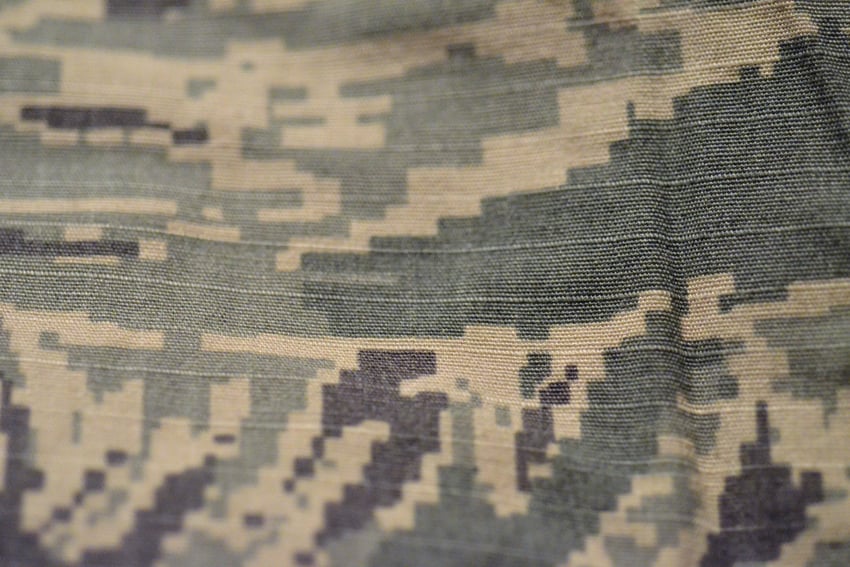
Not to be left out, the United States Air Force developed their own pattern, which was sort of a combination of UCP and the old “tiger stripe” pattern used in the Vietnam War by select forces. This pattern was developed by Tiger Stripe Products, who held the original patent on the old tiger stripe pattern and early prototypes of the camouflage were introduced in 2003.
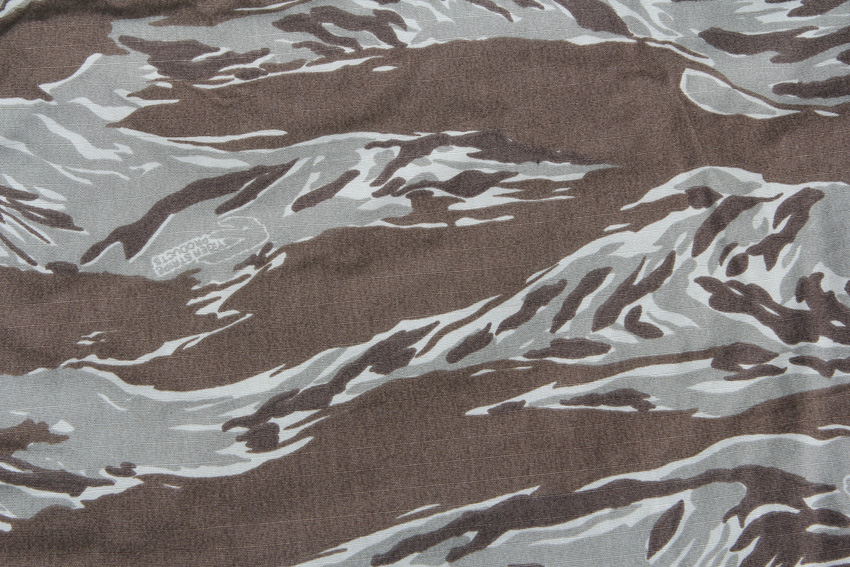
It became an issued uniform around 2007, with initial complaints that the material used was too thick and not very breathable in hot, arid environments. ABU Tiger Stripe consisted of roughly the same color palette as UCP, with the addition of slate blue components and as described by the folks who created it, “fabric durability, color retention, ease of care, uniform comfort, as well as a range of female sizing were high priorities while camouflage effectiveness was essentially unnecessary and a non-issue.”
Due to the ineffectiveness of the pattern in Afghanistan’s terrain, Air Force personnel generally are issued OCP (MultiCam) in those environments, though they’re still required to wear the ABU Tiger Stripe pattern outside of Afghanistan, since USAF has not seen fit to permit OCP’s wear outside of the Afghan theater.
Tiger Stripe Products have created a suitable replacement, “All Terrain Tiger,” which is currently being tested by Air Force Special Operations units and consists of a similar basic pattern with a more effective color palette similar to the palette of MultiCam. Whether it will be widely adopted remains to be seen. For now, ABU Tiger Stripe pattern uniforms are generally only available as issued clothing, while All Terrain Tiger patterned clothing is commercially available.
Naval Working Uniform, AOR I and AOR II
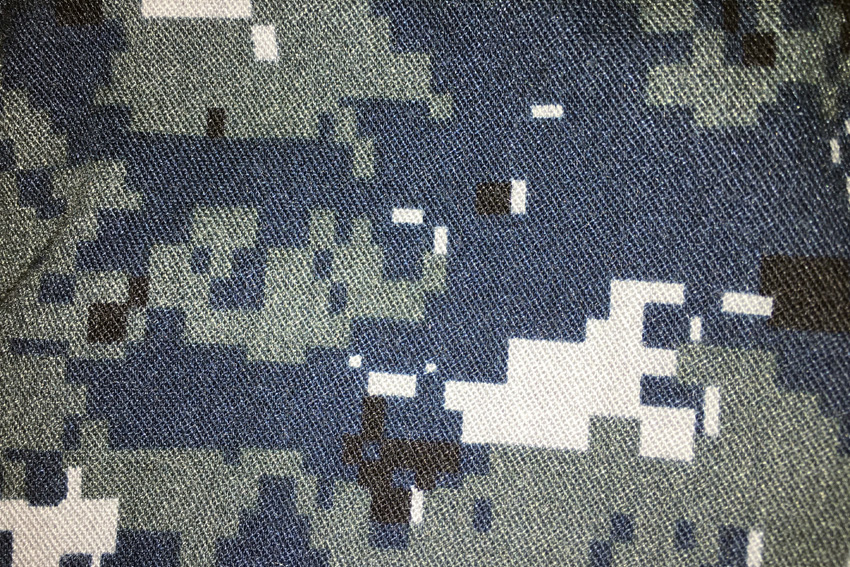
The Navy commissioned their own camouflage patterns, three in total, for wear by sailors. For the most part, these are difficult to obtain in the commercial market. The first pattern, predominantly navy blue and gray, was designed less to conceal the wearer within their environment (given that it is mainly worn by ship-borne sailors on generally grey ships) but more to reflect the Navy’s seaborne heritage, as well as more easily obscure wear, stains and the effects of contact with fresh paint on Navy vessels.
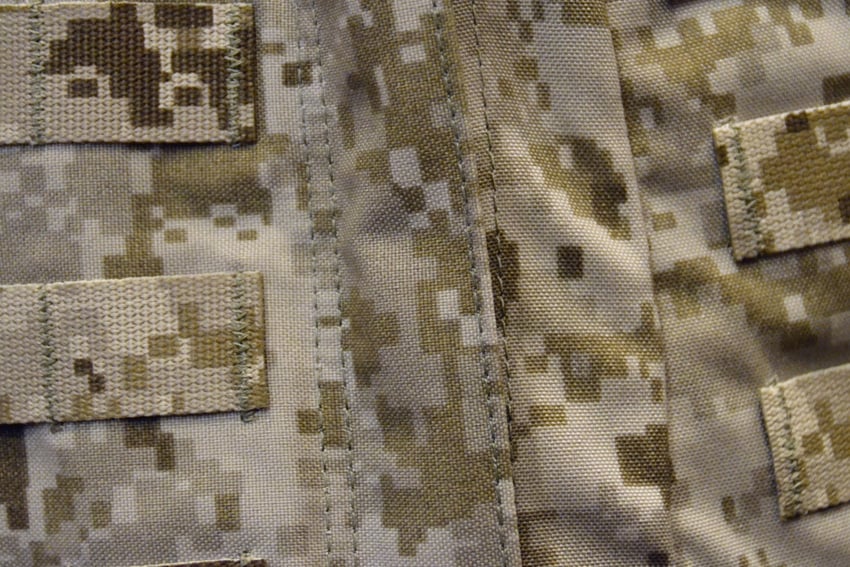

AOR I and AOR II were also developed for use by Naval assets like SEALs and SWCC crews, providing desert and woodland camouflage options for them. As stated earlier when discussing MARPAT, there’s already an article here on ITS that has significantly more details on these two particular patterns, as well as the current Navy Working Uniform.
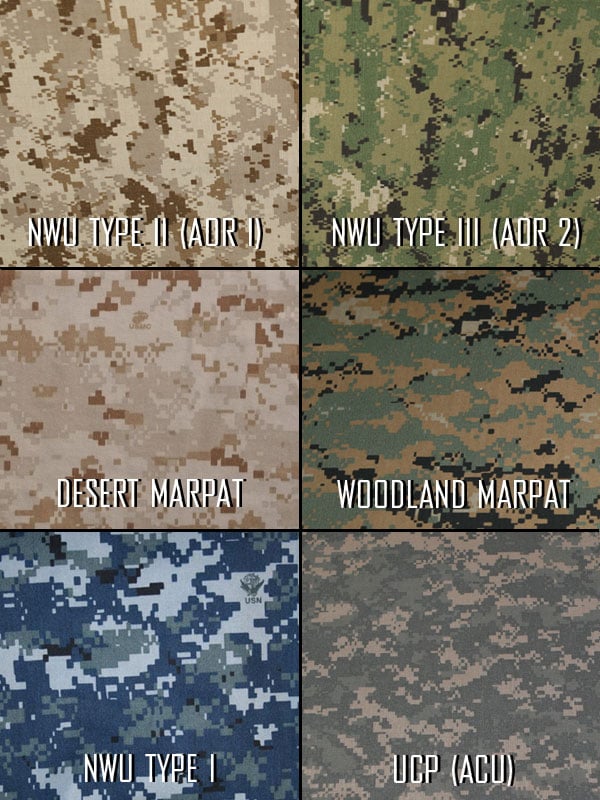
Much like MARPAT uniform elements, the official Navy Working Uniforms are available by government issue only, though a handful of manufacturers have copied the NWU patterns for commercial resale, with slight modifications to the color tone and the removal of the US Navy seal embedded within the pattern.
Mirage Camo
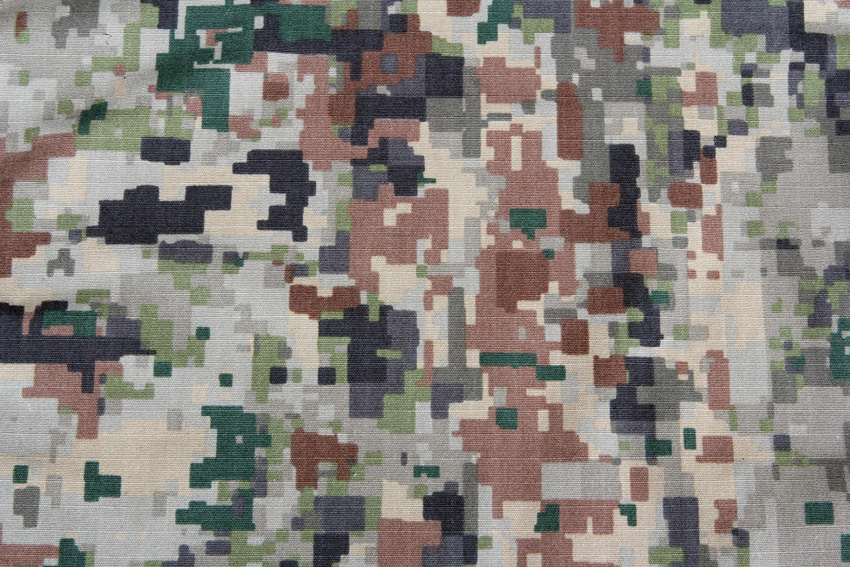
Bulldog Tactical Equipment’s Mirage Camo is another pattern which has been tested at ITS before, that was initially going to be restricted to US DOD customers. These days, it seems you can purchase a limited selection of items from Bulldog Tactical Equipment in the Mirage pattern, yet not the extensive list of clothing and equipment that used to be available at the Mirage camo website (which seems to no longer exist).
Bulldog developed the Mirage pattern after UCP had been adopted by the US Army in order to create a true “multi-environment” camouflage, using a palette of greens, browns, rust-tinted red and tan in a complex pixelated design. It’s meant to perform in urban, arid, semi-arid and wooded environments.
The A-TACS Family of Patterns
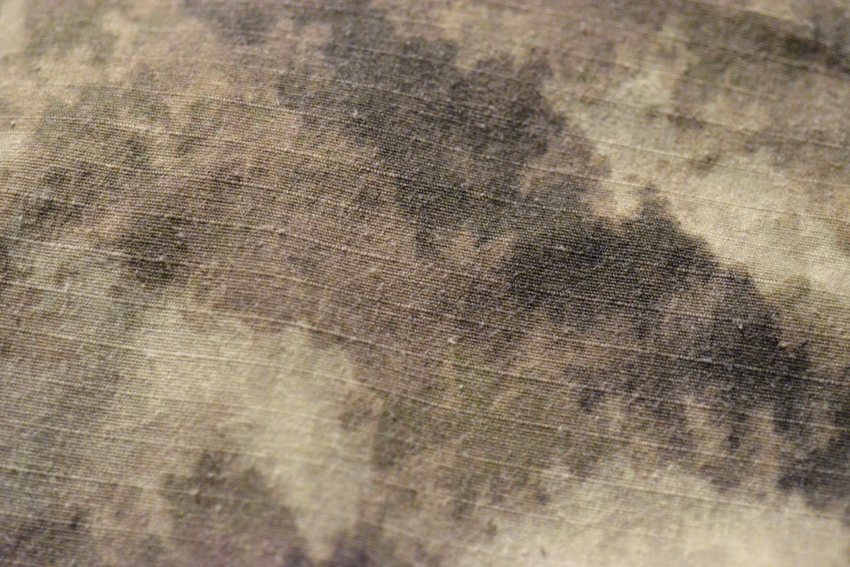
Digital Concealment Systems first created a pattern known now as “A-TACS AU”, which is a fractal-based digital camouflage pattern for use in arid environments. Since that time, DCS has spawned “A-TACS FG”, a dense vegetation pattern variant, “A-TACS LE”, a black-based variant, “A-TACS iX” (Intermediate Extreme) and “A-TACS AT-X” (Arctic Tundra) patterns.
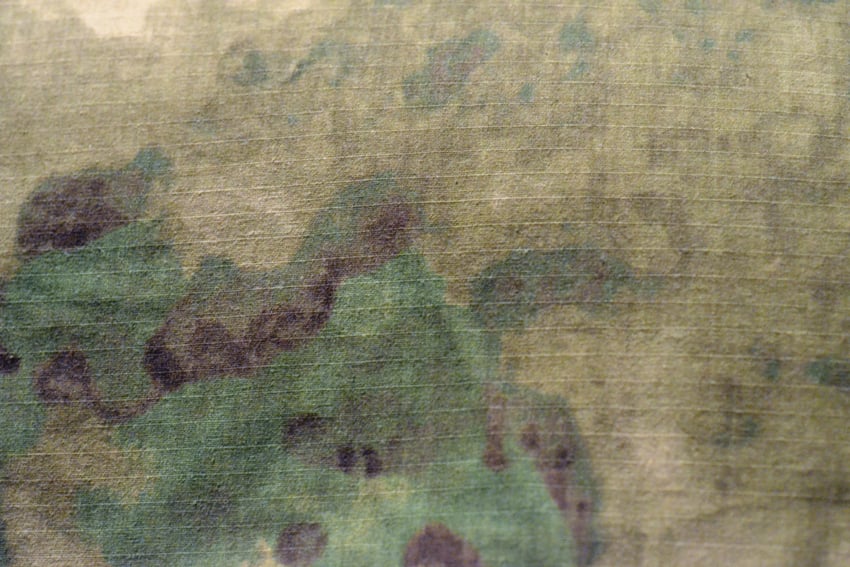
The A-TACS AU, A-TACS FG and A-TACS LE patterns have all seen wide adoption by law enforcement agencies and special operations groups in the United States. They’re also available from a number of different vendors in different uniform and gear options, including such applications as gun coating hydro-dip materials and vinyl vehicle-covering materials. The A-TACS family of patterns use rounded “organic” pixels and a combination of micro and macro patterns that repeat throughout the overall camouflage pattern.
Kryptek
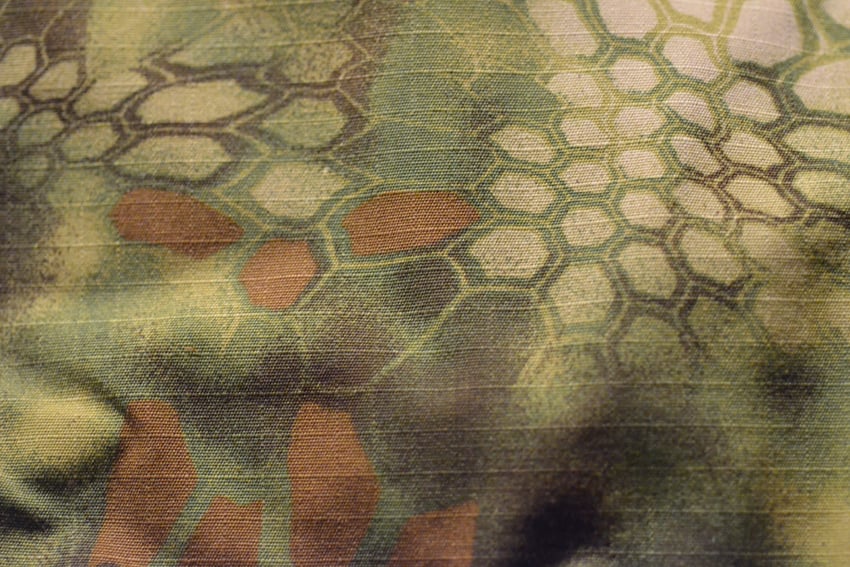
Kryptek Outdoor Group, founded by US Army Pilots Butch Whiting and Josh Cleghorn, was created to develop camouflage patterns and clothing that would be usable both for hunting and on the battlefield. They’ve developed their Kryptek pattern, available in a number of different colorways, for a variety of different environments and situations.
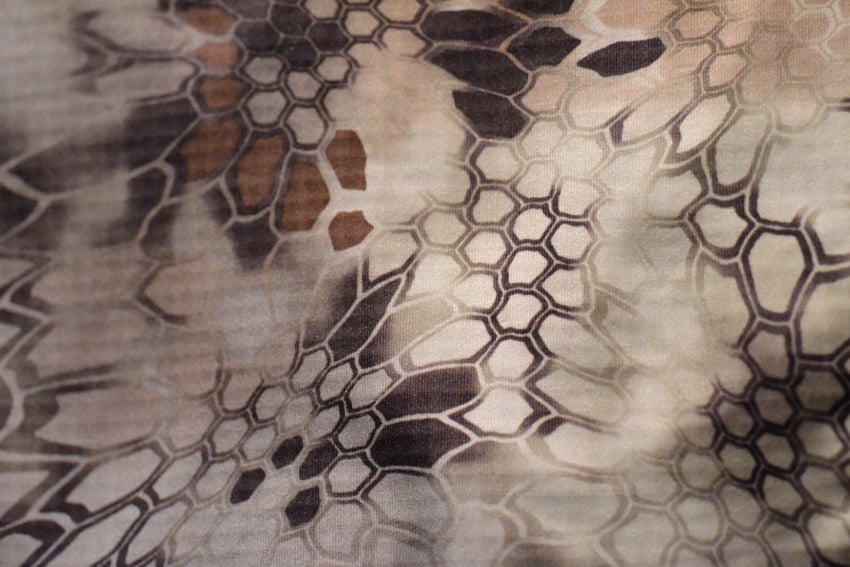
Nomad, their arid environment pattern, is made up of tans and browns. Highlander is a pattern aimed for varied environments, such as mountainous terrain with a blend of both vegetation and rock. Mandrake is predominantly green tones and aimed for use in wooded environments. Typhon is a dark pattern of mainly black and gray, meant for use at night. Yeti is a pattern for use in snowy environments and is white with gray.
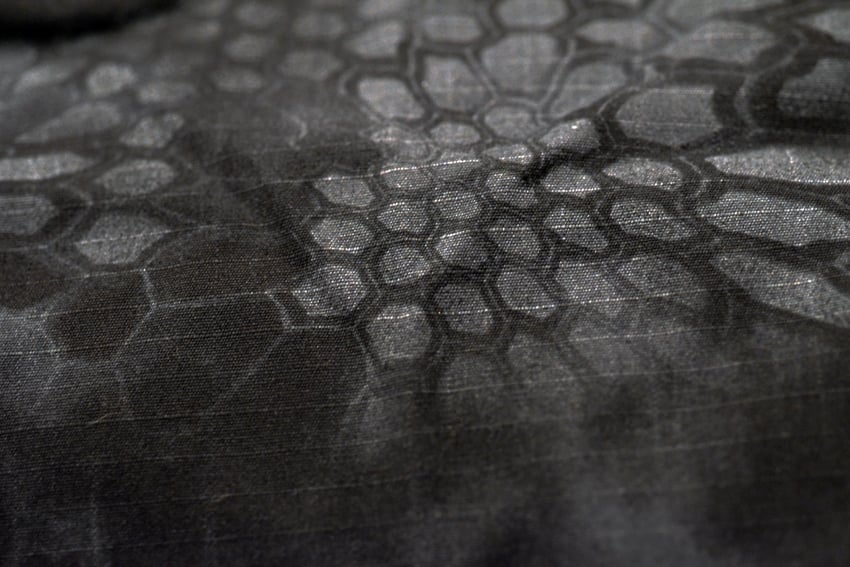
In addition to these original options, Kryptek has also created Raid (for use in urban environments, generally gray in color), Banshee (a seasonal woodland option for use during the Fall months where vegetation has turned brown and barren), Altitude (made for use in mountainous environments above the tree line where vegetation is sparse) and Neptune and Pontus (which could roughly be described as “ocean-influenced lifestyle camouflage” patterns, both predominantly blue in color and not intended to necessarily provide concealment in those environments so much as to serve as distinctive patterns for use near them.)
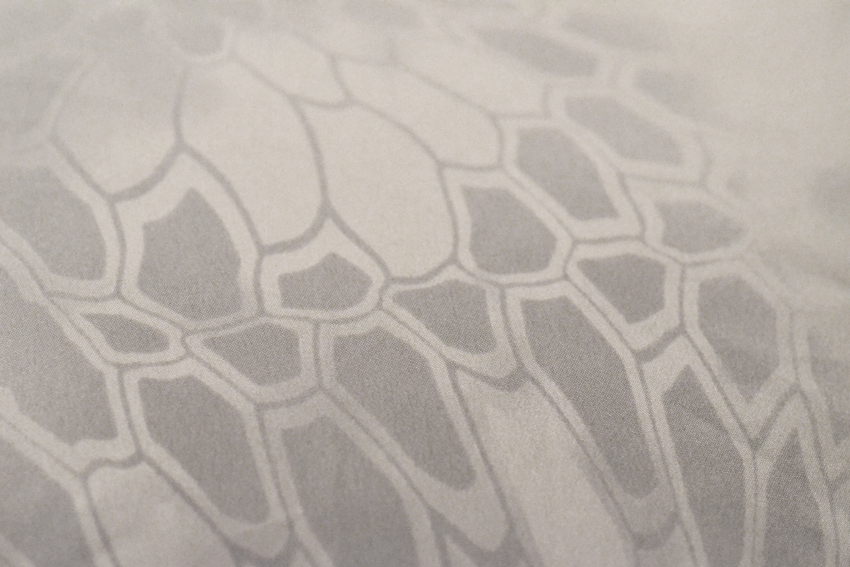
While the target market for Kryptek patterns has been a combination of hunting/outdoor users and tactical users, Kryptek’s pattern was entered into the most recent testing of camouflage patterns for the Army, amongst 60 other companies and was one of the final four contenders. While in the end, the Army went with Scorpion W2, Kryptek’s achievement in the testing showed a high level of effective concealment from their pattern.
The Kryptek pattern is now widely available, with clothing options from Kryptek themselves and other licensed manufacturers. There’s also a fair amount of nylon gear made with the Kryptek pattern, as well as water-based dipping options for applying the pattern to hard gear like weapons systems.
HyperStealth
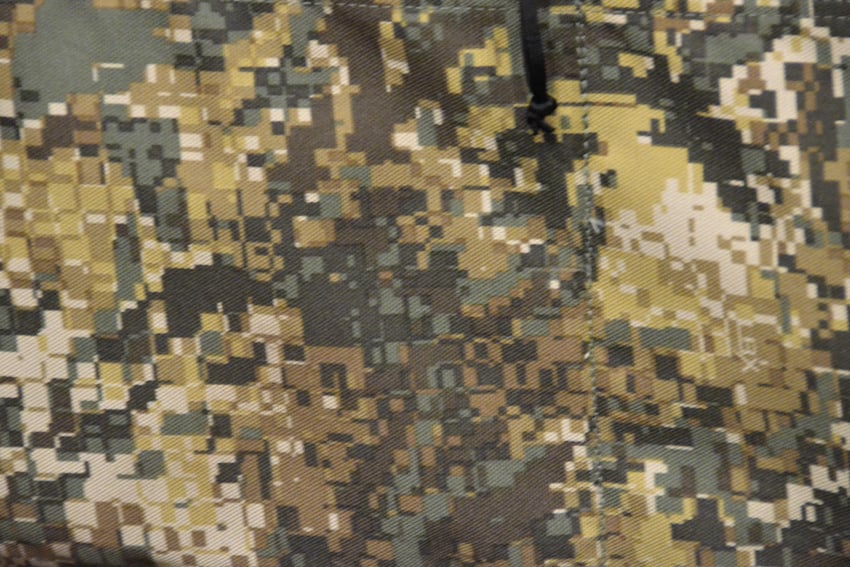
Hyperstealth Biotechnology Corp’s Guy Cramer began developing fractal-based camo patterns in 2002 and by 2003, found himself being commissioned by King Abdullah II of Jordan to develop a replacement pattern for the Jordanian armed forces and police. Since that time, Hyperstealth has created a seemingly endless number of patterns for an equally lengthy list of client governments and armed forces; including Canada, Slovenia, Afghanistan, South Africa, Saudi Arabia, Peru and most recently they made news by procuring the contract with the Mexican Marines to replace Mexico’s prior digital camouflage pattern.
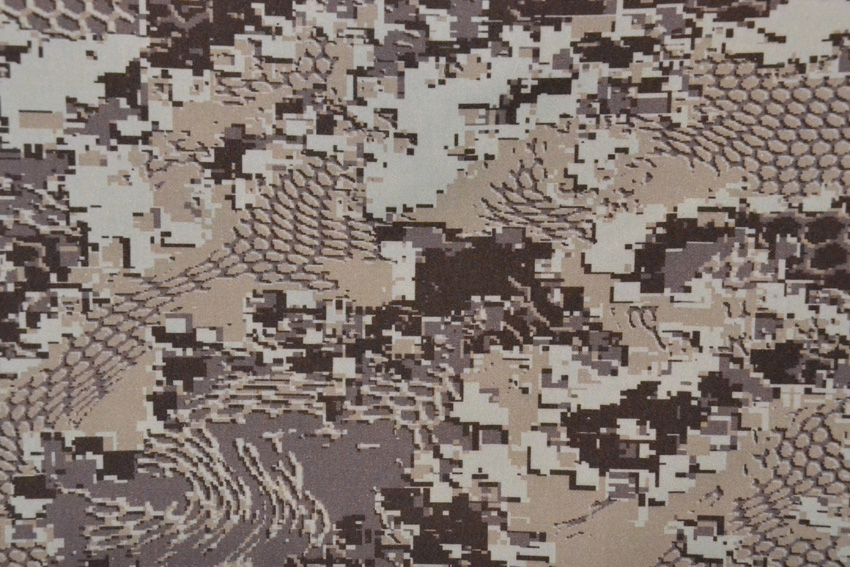
Since that announcement, the particular pattern, now referred to as “Marina Trans Jungle” (and previously known as “US4CES Transitional”) has become very difficult to obtain and for that matter, almost as difficult to get pictures of. When ITS was at SHOT Show in Las Vegas, we saw Marina Trans Jungle on display at the London Bridge Trading booth, but were told not to take any close-up photographs of either the pattern or uniforms, due to the contract LBT had signed with Mexican authorities and their (Mexico’s) sensitivity to controlling access to the pattern.
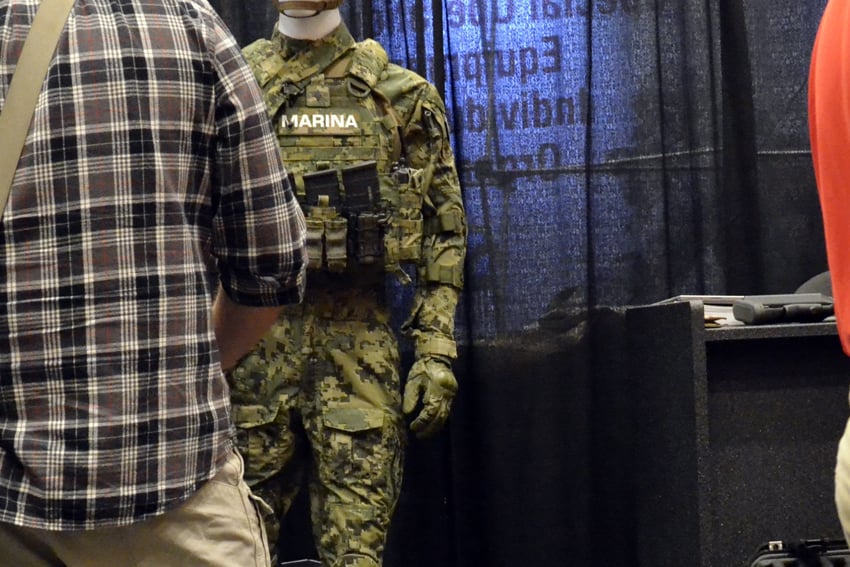
Hyperstealth has developed “over 12,000” camouflage patterns since 2002 and could likely merit their own encyclopedic article, creating both their own families of patterns, as well as working with other companies collaboratively or by commission to create patterns familiar to the hunting communities. (Gore’s Optifade) and others (Columbia Sportswear’s Amphibious Assault line). Also of note is the work, albeit secretive thus far, Hyperstealth has done with “light bending” and color-changing (“Smartcamo”) technologies and the creation of their “Quantum Stealth” camouflage technologies. Though details are currently scarce on these developments, we’ll keep a look out for future announcements.
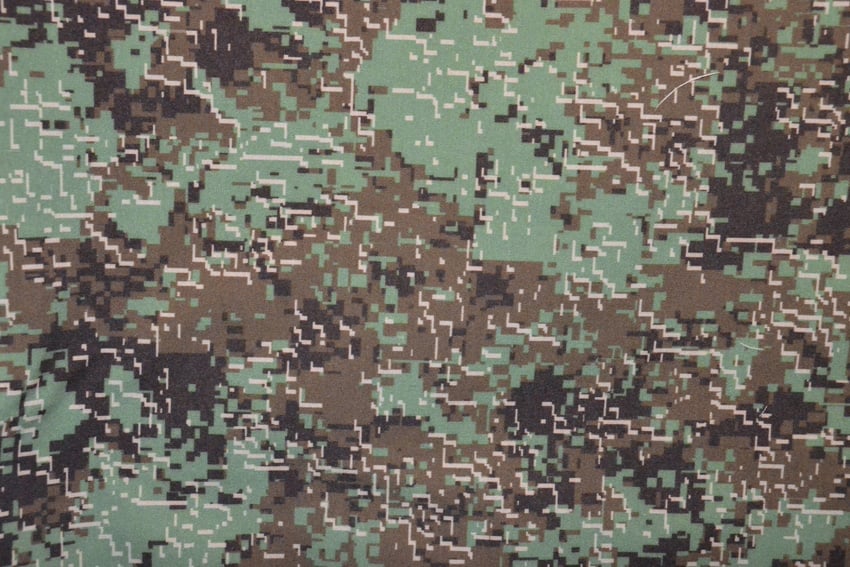
Unfortunately for the general civilian consumer, Hyperstealth has, for the time being, suspended ordering either cloth or uniforms directly from them in order to “complete [their] patents on the Quantum Stealth Light Bending Material”.
PenCott
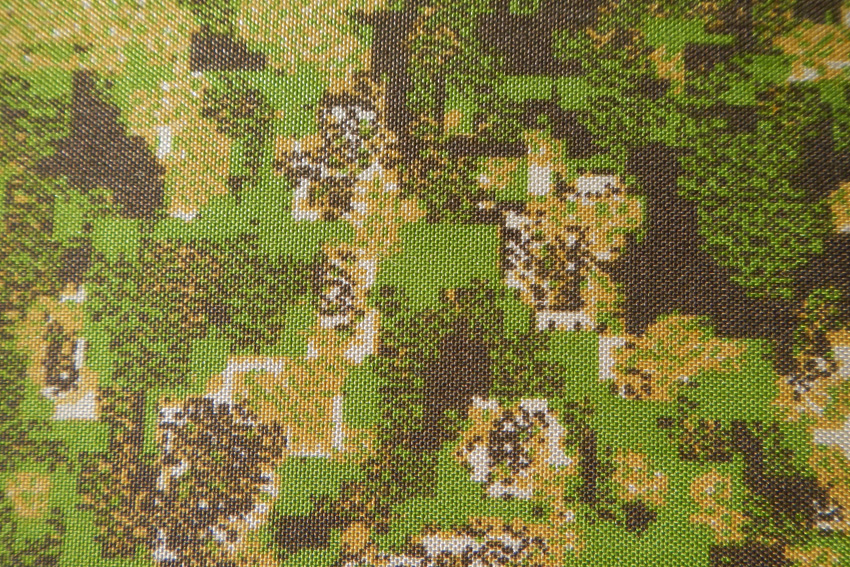
In 2008, Dominic Hyde, a member of the International Camouflage Uniform Society, former British Army artilleryman and lifelong camouflage aficionado, founded Hyde Definition in the United Kingdom. Hyde Definition first released their “PenCott GreenZone” pattern in 2009 and soon released other variants on the pattern for use in different environments. “PenCott Badlands” is geared towards transitional semi-arid environments, while “Pencott Sandstorm” is geared towards exclusively arid environments and “PenCott Snowdrift” is, as the name implies, aimed at blending into alpine or snow-heavy environments.

The PenCott family of patterns use what they call a “3 in 1” pattern geometry and while it encompasses some aspects of the pixelated digital patterns seen in MARPAT, UCP, CADPAT and other “digital” camouflage patterns, breaks up those small squares of color with organic elements which supposedly appear more natural, providing solid concealment at close, medium and long ranges. It derives its name from two British camouflage pioneers, Sir Roland Penrose and Dr. Hugh Cott.

Penrose’s work concentrated on the importance of texture, in addition to color, with an eye towards concealing assets from aerial photography. Dr. Cott’s work was geared towards learning and implementing concealment lessons from the natural world, in particular, the coloration and patterns found in the animal kingdom.
PenCott patterns have seen use by Polish, African and United Arab Emirates forces, as well as others. PenCott clothing and gear can be obtained in a wide variety of places, with an equally diverse group of manufacturers using it. Mystery Ranch, Helikon-Tex, Grey Ghost Gear, UF PRO and SOD Gear have all produced products in various PenCott patterns.
Landcamo ABD Series
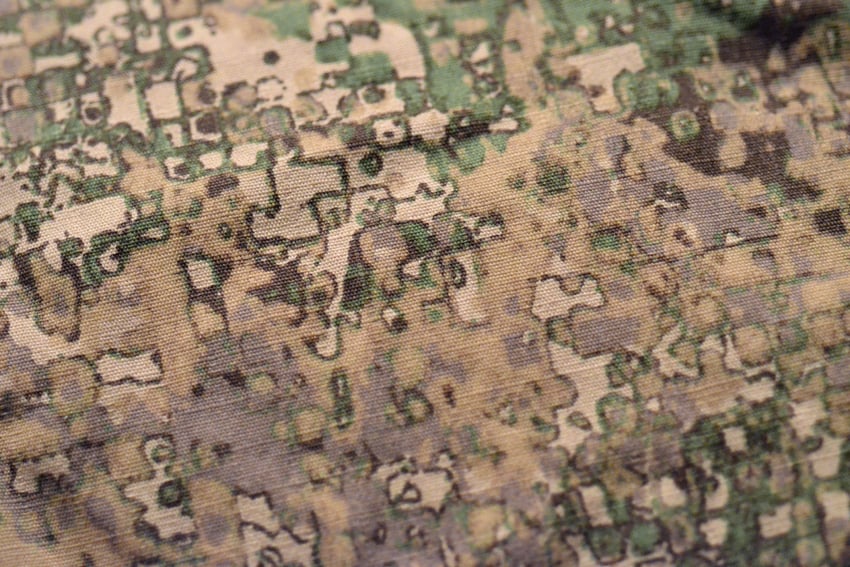
Brane T. Cervek is a Slovenian long-time survival instructor. He’s taught a number of military units from around the world, including the US Army Special Forces and French Foreign Legion about surviving, escaping, resisting and evading in austere wilderness environments through his School of Survival from Nature.
He created a concealment/camouflage textile company called “Landcamo,” who have since developed a family of patterns for different types of environments called “ABD” (American Battle Disruption). Within that family, there are the ABD/SERE (arid, middle-east environments), ABD/JÄGER (tropical or heavily wooded environments), ABD/MAMMUT (mixed green/gray environments), ABD/GORA (mountain environments) and ABD/ALPINE (snow-covered environments).
While initially developed for military clients, it’s possible for civilians to get their hands on at least ABD/SERE from vendors like SpecOps Shop. The pattern borrows heavily from natural elements, though the end result is a complicated pixelated pattern with softened edges and use of multiple colors within each pixelated shape. This provides some sense of depth at close range and reduced contrast at greater distances.
CADPAT
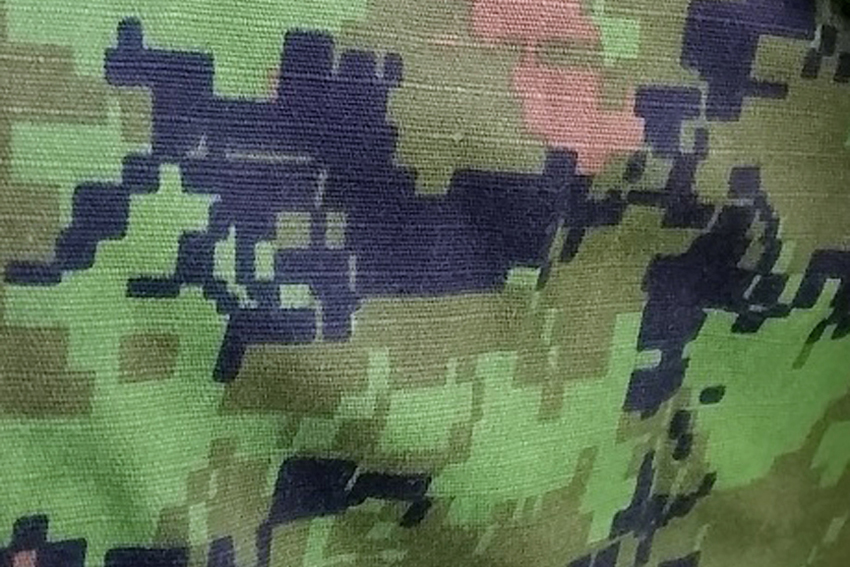
Canada’s “CADPAT” (Canadian Disruptive Pattern) is ultimately the grandfather of all the sundry pixelated digital camouflage patterns seen today. In the mid 1990s, Canada’s Clothe the Soldier Project (CTS) developed a computer-generated camouflage pattern, with the primary goal of defeating detection of the pattern by night vision devices.
CADPAT exists in four variants; Temperate Woodland (the green-dominated pattern), Arid (the desert version), Winter/Arctic and Urban (CUEPAT, developed in conjunction with HyperStealth). CADPAT look-alike patterns are available commercially, but the official CADPAT material is controlled by Canadian law and is intended only for use by their military.
Singapore
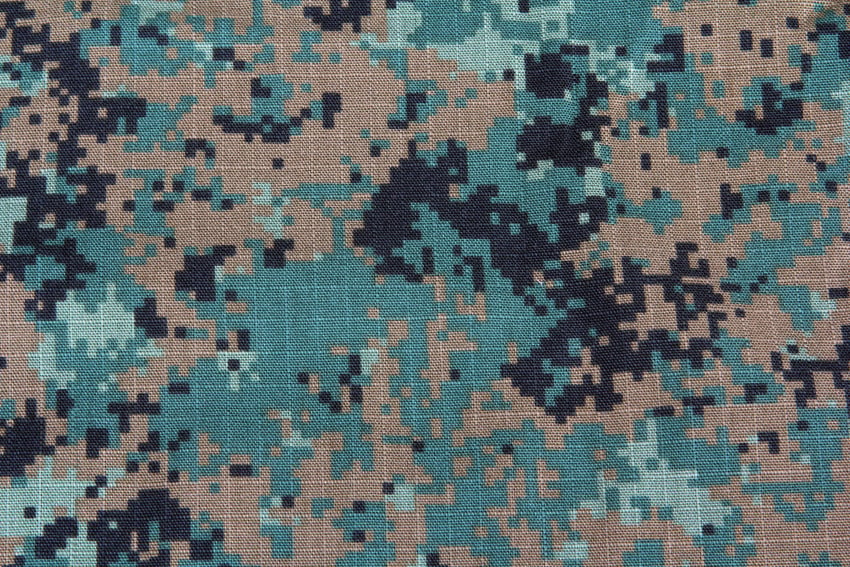
Singapore created their own pixelated digital camouflage pattern known as “Uniform, Man’s, Pixelised, Camouflage Pattern No 4”. Catchy, right? They also subsequently created a desert version of the pattern, an Air Force version and a Naval version, all re-colorations of the same pattern.
“Uniform, Man’s, Pixelised, Camouflage Pattern No 4” looks a great deal like MARPAT, though with the addition of a lime-green color more common in tropical jungle environments. Prior to the development of this pattern, Singapore had used an ERDL variant.
Italy
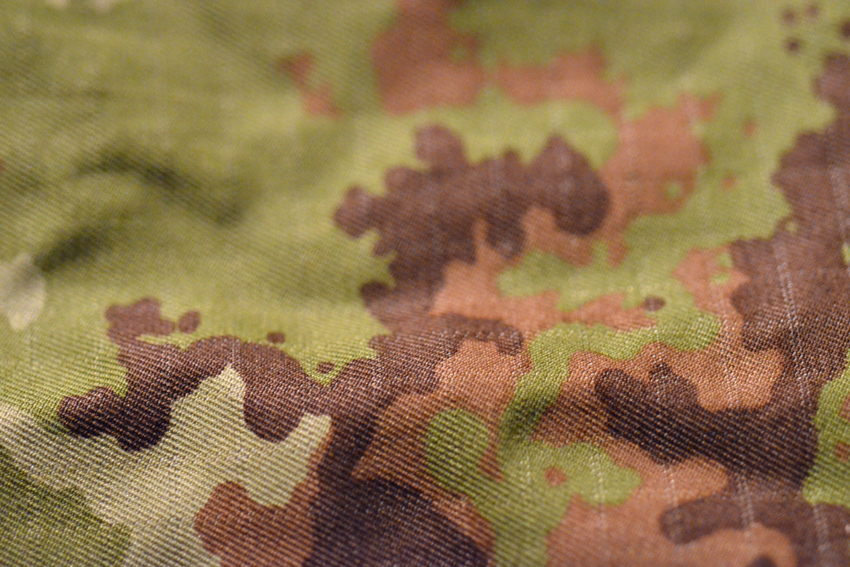
Italy’s armed forces use a family of patterns known as “Vegetato,” which are digitally generated, fractal based pixelated patterns. Although they use a more organic pixel, giving the pattern a more natural appearance. Both of the two primary variants (Vegetato and Desertico) are commonly available from surplus outlets in Europe, though less common in the United States.
Another quality vendor of new uniforms and gear in Vegetato is SOD Gear, in Italy. They do ship to the United States and make fine products in a variety of color and concealment schemes. One of my favorite BDU sets is a uniform in PenCott Badlands that I purchased from SOD Gear.
United Kingdom

Throughout the world, various nations have frequently created their own patterns for their respective individual armed forces. The UK has recently moved towards using a version of MultiCam specific to their use, but prior to that was using a pattern known as “DPM” (Disruptive Pattern Material) and a desert-oriented version known as “Desert DPM”.
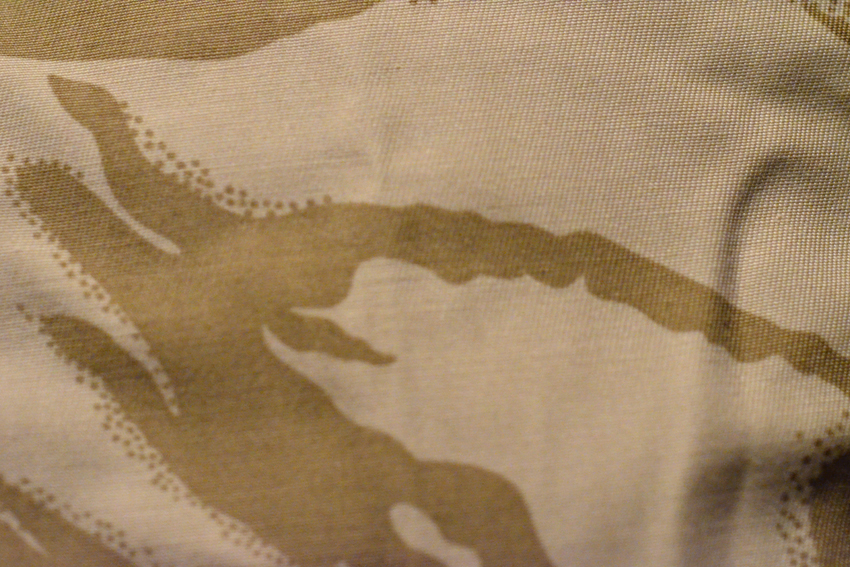
While somewhat similar to the US Woodland/ERDL pattern, the shapes were different, though the color palette was almost identical. The Desert DPM pattern used fewer colors than normal DPM and was basically made up of multiple shades of the same tan color. Uniforms and gear in DPM or Desert DPM is widely available worldwide at surplus stores.
France
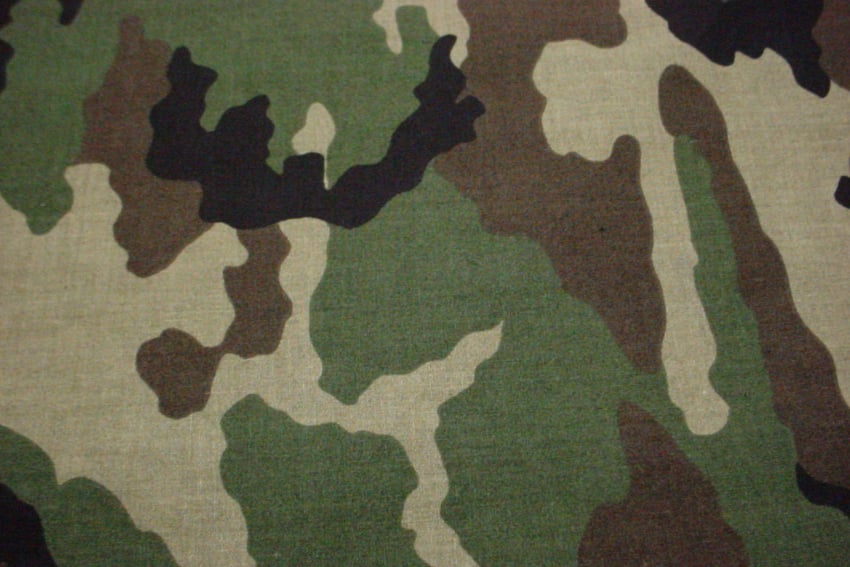
France created their own woodland-oriented pattern known commonly as CCE, or “Camouflage Centre Europe”, using four colors (green, tan, brown and black) in a pattern very similar to M81. While found less commonly in the United States, surplus uniforms and gear in French CE can be found throughout France, as well as in Austria.
Germany, Japan, China, Belgium, Denmark, India, Poland and Russia
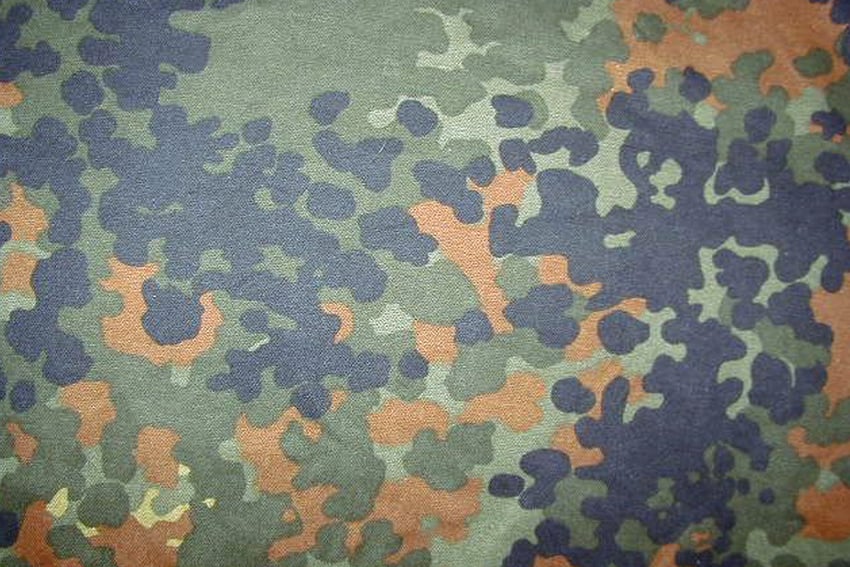
Germany has been using two predominant patterns for their armed forces since about 1990; “Flecktarn” and “Wusterntarn” (sometimes referred to as “Tropentarn”). The Flecktarn pattern is comprised of circles and shapes made from those spots and has been developed in various forms since 1937. The current version saw wide release by German defense forces during 1990 in two formats. Flecktarn being the woodland environment version, using dark green, light green, red, black and tan, while Wusterntarn is the arid environment option, using tan, brown and green.
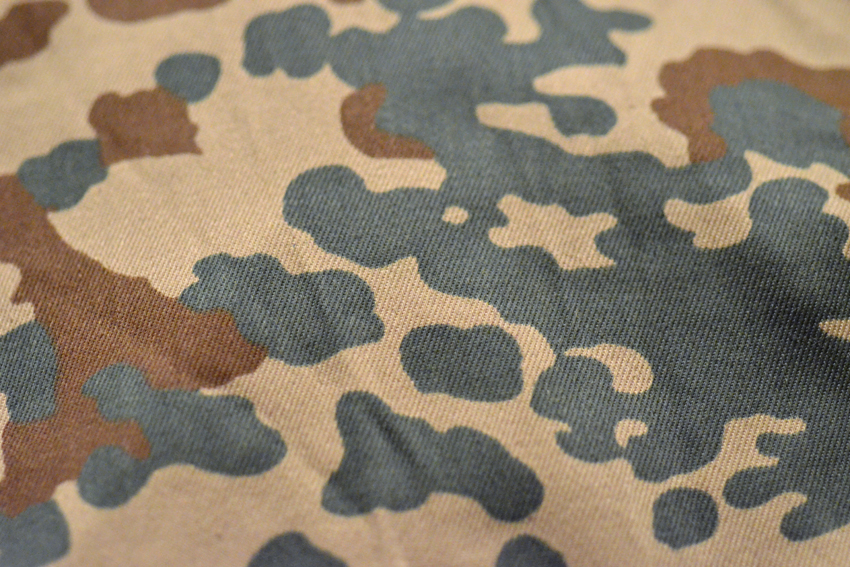
In 2013, “Arid Flecktarn” was released by Mil-Tec, using a revised color palette more closely matching the MultiCam color ways. Thus far, it hasn’t seen wide adoption. Japan’s Defense Forces also use a flecktarn pattern derived from German Flecktarn. In addition, China, Belgium, Denmark, India, Poland and Russia have all used patterns evolved from German Flecktarn. The German Flecktarn and Wusterntarn are both widely available in surplus outlets in the United States as well as throughout Europe.
Australia
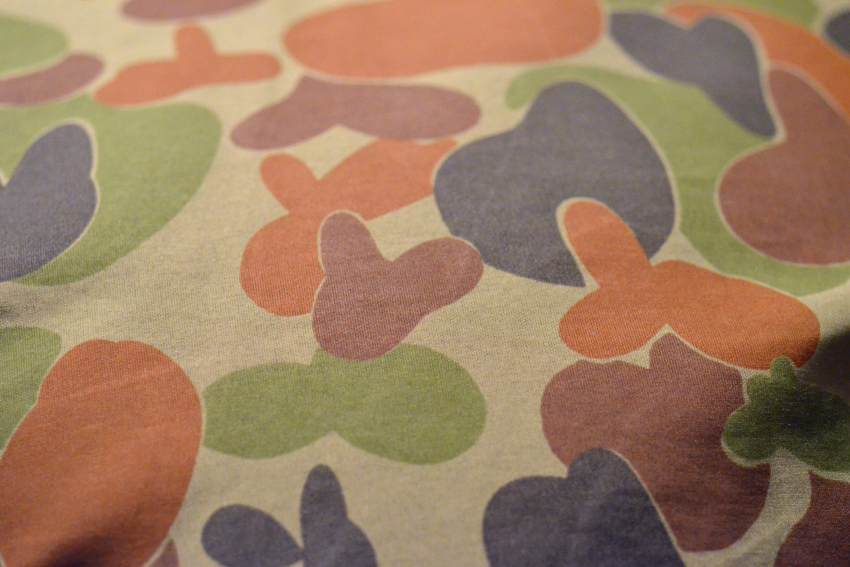
Australia has been using their own pattern called the Disruptive Pattern Camouflage Uniform pattern since 1986, based loosely on American jungle camouflage patterns, but using a color spectrum based on aerial photographs of Australian land. DPCU is sometimes referred to as “jelly bean camo,” or even affectionately called “bunny dick camo” by members of the Australian Defense Force.
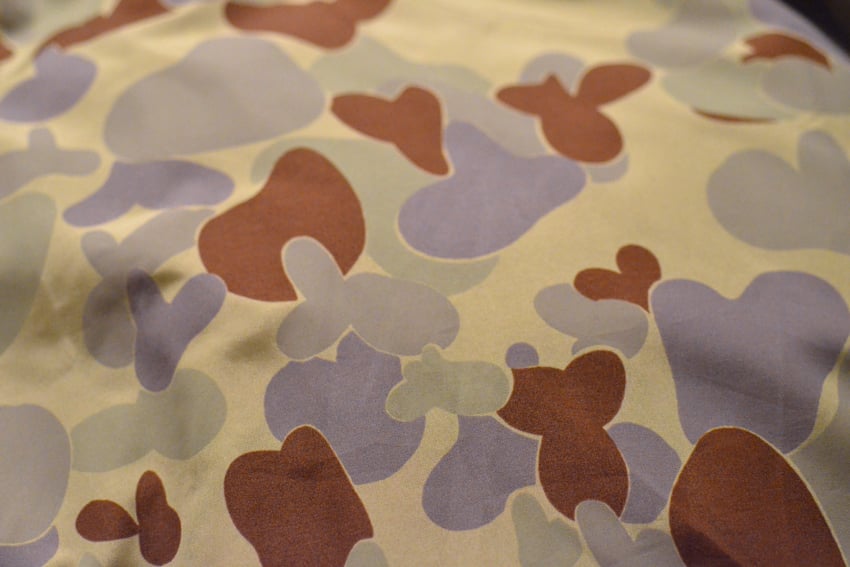
Australian forces have also been using a 5-color version known as the “Disruptive Pattern Desert Uniform” since 2006, geared towards arid environments. Versions for use by the Australian Navy and Air Force have also been developed and released. While harder to find than some nations’ surplus (eg: the UK), gear and uniforms in both DPCU and DPDU are available for civilian purchase from vendors like Platatac.
Sweden
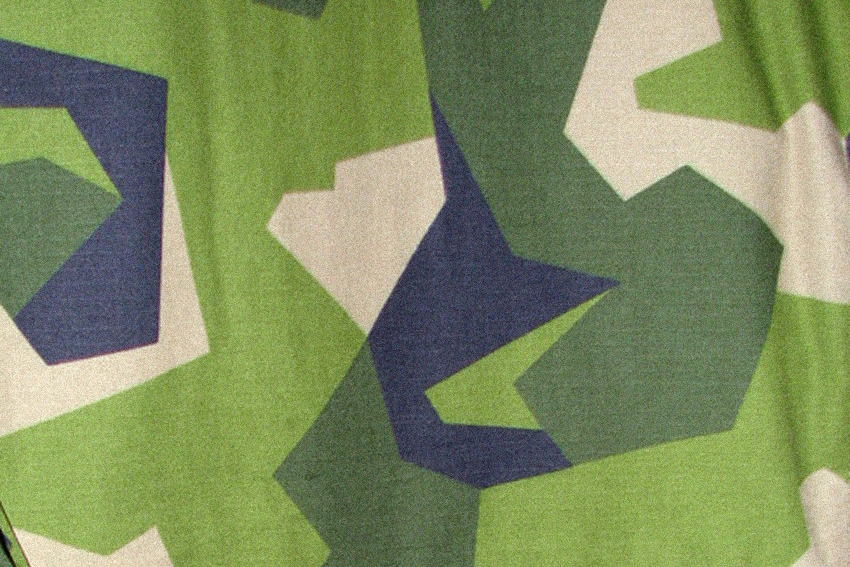
Sweden uses a pattern known as the M90 pattern, made up of crisp geometric shapes in dark green, light green, grey and a dark navy blue, since the late 1980s. The pattern was developed by reducing the scale of the shapes from the camouflage painting that Sweden had been using for their military vehicles since the 1970s.
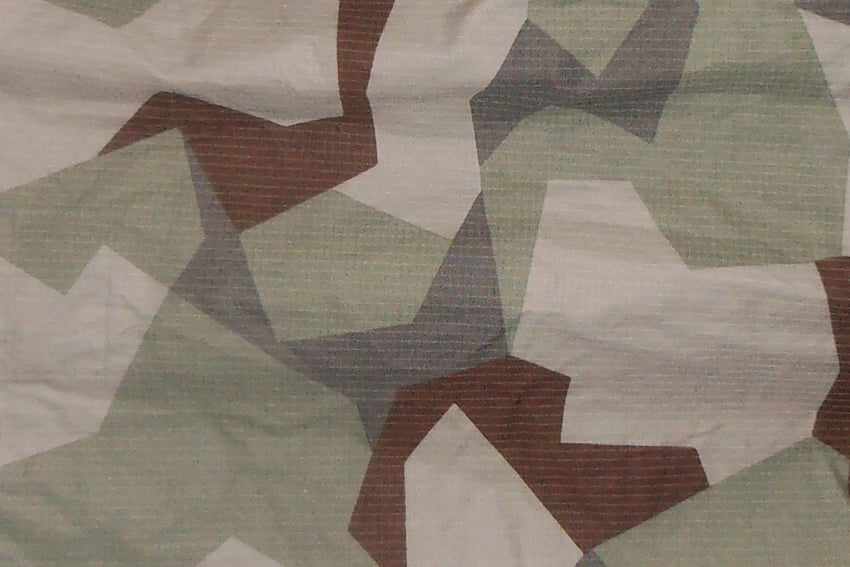
They’ve also developed a version of desert use, which Swedish troops have worn in Afghanistan. It is fairly uncommon to find Swedish M90 clothing or gear in the United States, but it can be ordered from European vendors if you don’t mind waiting for shipping. Alternately, there is always the eBay option.
Ireland
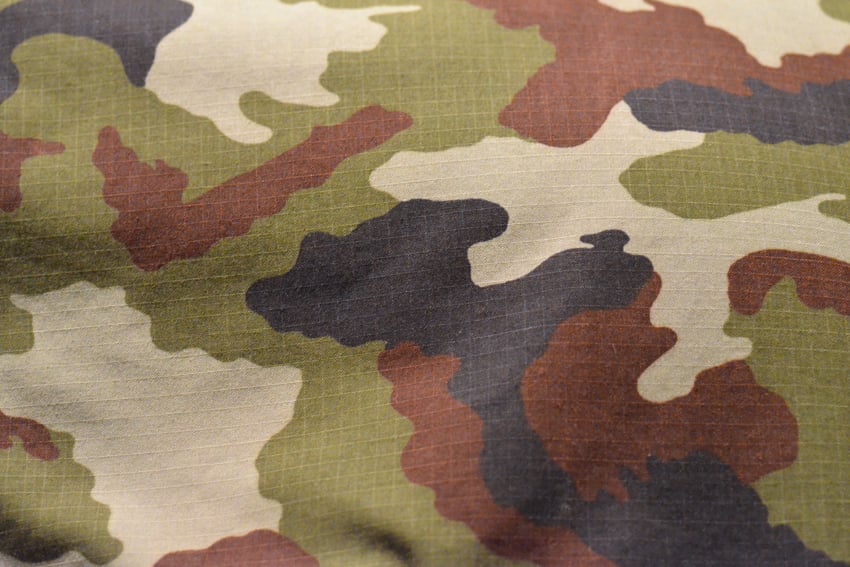
Ireland has their own “DPM” that bears almost no resemblance to the neighboring UK’s DPM and it’s colloquially referred to as “Paddyflage.” The Irish Defense Forces have worn this pattern, actually designed in Belgium, in their peacekeeping excursions to the Congo and Lebanon and predictably enough, there’s a desert version of the pattern.
The pattern is very close, color-wise, to France’s CCE pattern. It’s exceedingly difficult to find clothing and gear in Paddyflage, owed largely to the fact that the Republic of Ireland made it illegal to sell in Ireland, most likely because of the potential problems they would have had if any of the various IRA factions had been able to procure it, then act under “false flag” operations against British forces in Northern Ireland.
It’s not impossible to find and purchasing on eBay from someone in the UK (or at least not in Ireland) is likely your best option. I’m proud to have obtained a Paddyflage parka in that manner and it’s one of my favorite pieces of camouflage clothing, despite my wife’s wishes that I stop wearing it to family events.
Mexico
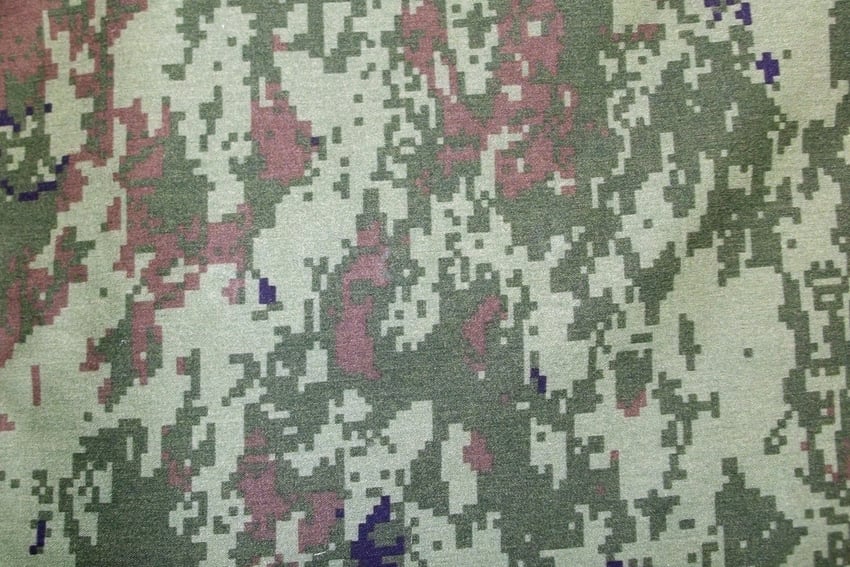
As mentioned earlier in the section on HyperStealth, Mexico is moving towards using the Transitional variant of US4CES. Prior to that adoption, however, Mexican military forces designed (and actually produced) their own pixelated digital camouflage pattern. Finding this pattern, or clothing in this pattern, is almost impossible if you don’t plan on moving to Mexico and signing up for their armed forces.
When it was in use, uniformed personnel in Mexico performed the actual production of the material and sewing of the uniforms. The reason for this is not dissimilar from Ireland’s illegality on selling their material; Mexico has had a recurring problem with drug cartels and other bad actors portraying government forces to confuse, disorient or discredit said government forces. Mexican forces have also used a variety of other patterns, including US Woodland and DCU patterns, as well as a MARPAT look-alike pattern.
Resources
We hope you enjoyed the in-depth look at Camouflage patterns from both the Western World and abroad, for those desiring to learn more about camouflage, we’ve put together the following list of resources for you to peruse.




